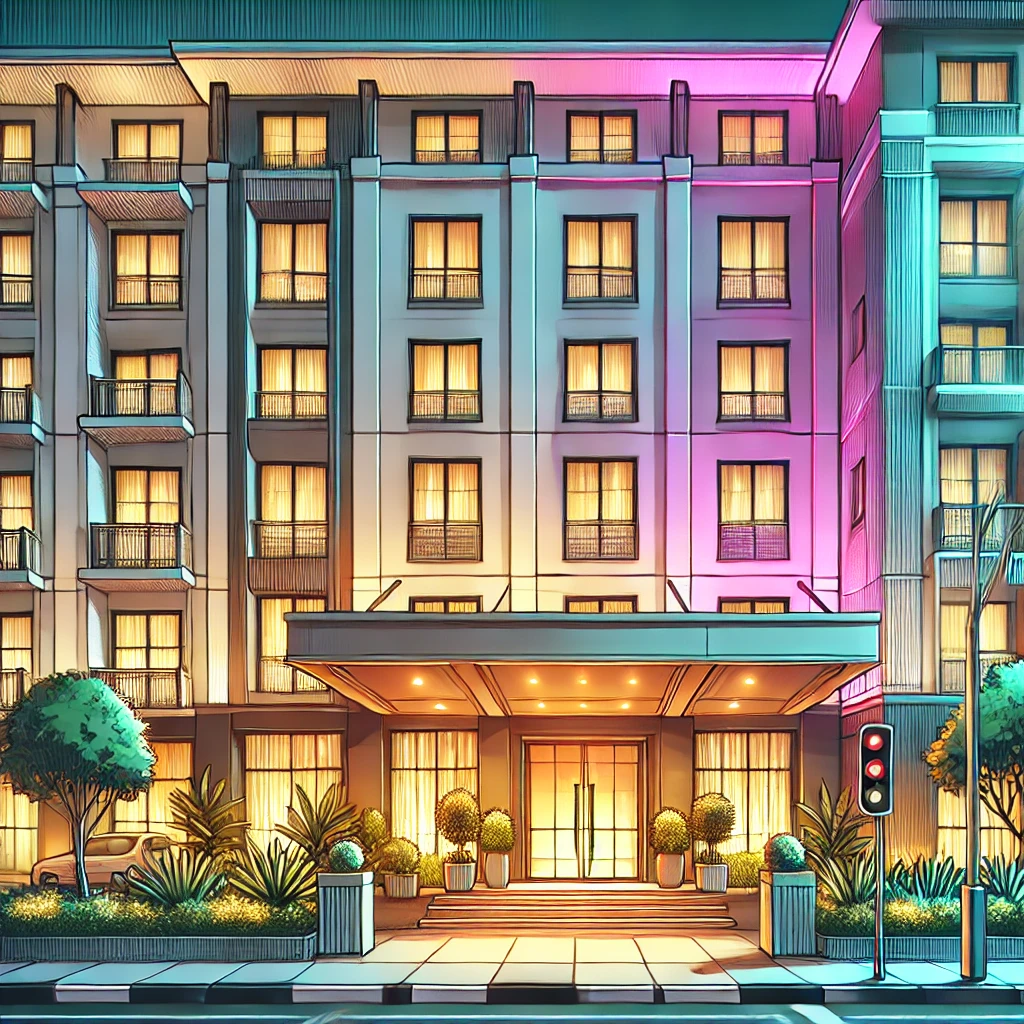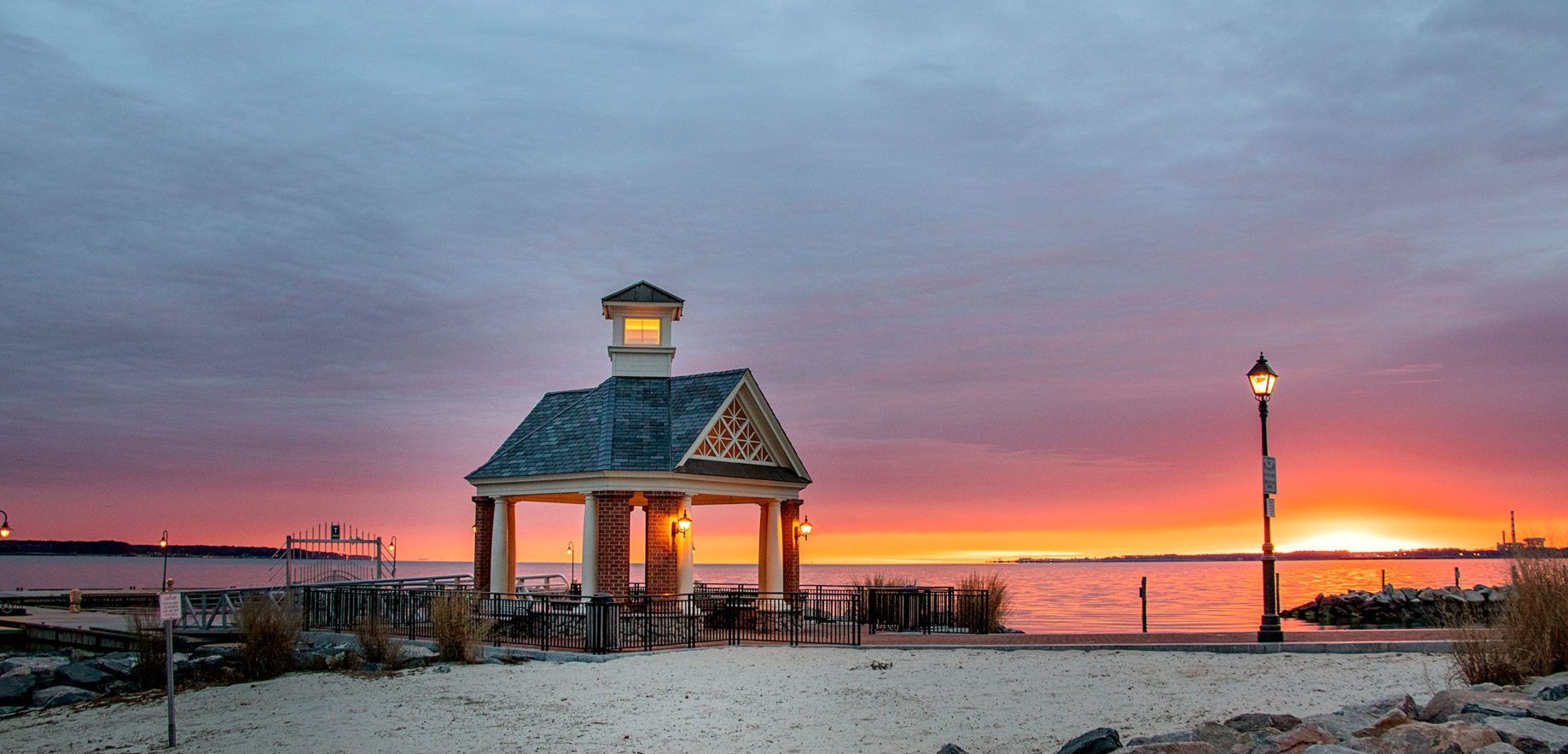Blog Layout
Black Friday is Almost Here – Should You Run a Promotion?
November 13, 2024
Yes, you should!

Adobe Analytics predicts that Cyber Week—the five days from Thanksgiving to Cyber Monday—will see over $40.5 billion in online spending this year, an increase of $2.5 billion from 2023. They also highlight an interesting trend in consumer spending. While inflation has led shoppers towards cheaper goods this year, they expect consumers to "trade up" this holiday season and shift towards premium goods. Simply put, consumers are more likely to purchase luxury goods when discounts are involved, allowing hotels to capture a segment of guests they would not otherwise.
With consumer spending and travel planning ramping up, hotels are pressured to craft irresistible Black Friday and Cyber Monday promotions. But where do you start? Here's a step-by-step guide to maximizing your hotel's success during this critical shopping period:
- Pick Your Booking Dates: Start early! OTA promotions will kick off as early as November 19, so aim to launch by Monday, November 25, running through Cyber Monday on December 2.
- Set Your Stay Dates: Most promotions target bookings for next year. However, if demand is low, consider including the December holidays. Exclude high-demand special events, but feel free to include peak season. Securing bookings this far in advance can give you the confidence to raise rates and reduce reliance on OTAs as those dates approach.
- Choose a Discount Structure: Percentage-based discounts are generally the most effective, making it easy for guests to see the value. Shoppers are looking for deals, so a 10% discount might not stand out, especially when OTAs offer 30% or more. To protect your margins, consider requiring a 2- or 3-night minimum stay to qualify.
Pro-tip: Market your promotion as "discounts up to 30% off" instead of just "30% off" to allow for lower discounts during peak season.
- Add-ons and Packages: If you want lighter discounts, consider bundling perks like breakfast or parking or offering complimentary room upgrades. Remember, these tend to underperform compared to more aggressive discounts unless supported by strong marketing, such as email campaigns or paid ads.
"Okay, I'm convinced – I'll run a promotion. But should I participate in the OTA promotions?"
Whether or not to join an OTA promotion is a personal decision that depends on your hotel's goals and occupancy needs. OTA promotions can significantly increase your property's visibility but come with trade-offs, particularly regarding profit margins. It's essential to weigh whether the increased occupancy from OTAs aligns with your long-term revenue goals or if direct booking offers better serve your property's positioning. Here's a look at the benefits and challenges of OTA deals:
- Increased Occupancy: OTA Black Friday deals boost visibility, exposing your property to guests who may not have otherwise found it. This exposure can drive occupancy and bring in first-time visitors. We've seen hotels with less than 200 rooms book over 1,000 rooms during their slow season through a single OTA promotion!
- Impact on ADR: OTAs often require a 30% discount for top-tier exposure, which, combined with high commission rates, can impact ADR and profitability. To offset this, consider limiting the number of discounted rooms or viewing the reduced ADR as a marketing cost to attract new guests.
- Direct Booking Alternatives: Many travelers prefer to book directly with the hotel if they see a deal that matches or beats OTA prices, so make sure to offer the same offer on your booking engine.
Other Tips to Optimize Your Holiday Promotions
While offering discounts and packages is a great start, fine-tuning the details of your promotion can make all the difference. Here are some strategies to keep your holiday promotions practical and appealing:
- Dynamically Adjust Your Rates: Hotels often focus on near-term rates and overlook future dates. If your promotion is performing well, remember to adjust rates dynamically to maximize revenue across all booking windows.
- Avoid Overly Conservative Booking Limits: Setting a low cap on promotional rooms might feel safe, but it can restrict your promotion's reach and overall success. Start with a manageable cap, then expand to maximize your booking potential if demand is high.
- Restrictive Advance Purchase Requirements: Prepaid, non-refundable offers might seem like a way to secure revenue upfront, but they can reduce production by 80% or more. Consider flexible terms to avoid missing out on bookings.
- Excessive Length of Stay Requirements: Minimum stay requirements help protect margins, but each additional night can significantly decrease demand. Strike a balance to avoid limiting your promotion's reach.
- Overly Complicated Promotions: Too many overlapping promotions can confuse guests, making it more likely they'll look elsewhere. Aim for simplicity to keep interest high.
- Remember Gift Cards: Gift cards allow your guests to give the gift of travel and capture revenue in advance. One hotel we work with offered a $25 bonus for every $100 gift card sold last year. This promotion generated almost 2% of their yearly revenue—of which only 60% have been redeemed.
Conclusion
Don't let this chance to capture the attention of eager holiday shoppers slip away—get your Black Friday and Cyber Monday promotions ready to go! With PricingService.ai, you have the tools to optimize your pricing strategies further, automatically adjusting room rates to capture additional revenue based on real-time demand and booking performance during this critical promotional period.
Ready to see the difference?

November 6, 2024
Setting the correct room rates is essential for any hotel, but pricing in the hotel industry presents unique challenges. Unlike industries that thrive on vast data sources, hotels—especially independent properties—operate with more targeted, guest-specific insights. Each property's unique characteristics mean that generalized, brand-wide strategies often fall short. That's where a "one-shot price experiment" can help. This method allows hotels to test a new rate and gather specific, actionable insights on guest behavior, empowering properties to optimize pricing based on their unique data. Here's how it works and how to apply it strategically to maximize revenue. What is a One-Shot Price Experiment? A one-shot price experiment involves testing a single new rate for a short period to understand how guests respond. Unlike other approaches, this method keeps the experiment focused and efficient—ideal for hotels looking for answers without an extensive history of data. This isn't about avoiding dynamic pricing or frequent adjustments, which are essential in revenue management; it's about finding an optimal rate faster and with less trial and error. The core idea is simple: set a new rate, observe how it performs, and use that information to inform your next move. But it's more than a "guess and check" exercise. Research, such as the study "Robust One-Shot Price Experiment" by Ali Daei Naby, Setareh Farajollahzadeh, and Ming Hu, shows that a one-shot approach, when done right, can quickly uncover guest price sensitivity, helping hotels discover rates that boost revenue without unnecessary complexity. How One-Shot Price Experiments Work: Insights from Research The science behind one-shot price experiments gives independent hotels a practical way to gauge demand with limited data. According to the study by Daei Naby, Farajollahzadeh, and Hu, a booking rate of roughly 30% at your current rate suggests you could test a higher "markup" price with reasonable confidence. If you're less sure, a lower "markdown" price may offer a clearer picture of guest demand- perhaps because bookings have been sparse. Framing it this way lets hotels assess their pricing confidence without needing turndown data, which most hotels don't track. If you're confident that at least 30% of guests would book at your current rate, testing a higher rate is a smart next step. This structured, data-informed approach minimizes risk, making it ideal for independent hotels experimenting with pricing without constant back-and-forth. How to Use One-Shot Price Experiments in Your Hotel If you're interested in applying this concept, here's how a one-shot price experiment might look for an independent hotel: 1. Identify a Baseline Rate Start by reviewing a typical weekend or weekday rate that has been performing reliably. This is your baseline against which to compare the experimental rate. 2. Select a New Rate Based on Your Booking Confidence If you're confident your current rate is performing well, try testing a slightly higher rate (e.g., $170 if your baseline is $150). If bookings are low, consider a discounted experimental rate to attract demand. 3. Forecast Your Targets Forecasting is critical to measuring success. The goal here is simple: increase overall revenue at a higher rate or improve profit by maintaining revenue with fewer rooms. If you expect to book ten rooms at $150 for $1,500 in total revenue, you should target filling at least nine rooms at $170 for $1,530 in revenue. You've found $30 more in revenue and have one less room to clean—anything beyond that is icing on the cake. 4. Run the Experiment and Observe Set your new rate for a brief period (e.g., a weekend or several weekdays) and monitor the response. Are bookings meeting your forecast? This observation period gives you real-world data on price sensitivity among your guests. 5. Analyze the Outcome and Decide If the experiment increases revenue with similar or fewer bookings, it's a success, and you may consider adopting this rate. If the higher rate didn't perform as expected, revert to the baseline and use the insight for future decisions. This streamlined process helps uncover valuable insights without extensive data, making it especially useful for independent hotels. How PricingService.ai Incorporates One-Shot Experiments Automatically One-shot price experiments can be powerful tools, but tracking and interpreting results manually can still be challenging, especially for properties with limited data. At PricingService.ai , we automate one-shot price experiments, gathering and applying insights seamlessly. Each rate adjustment becomes part of a smarter pricing strategy, freeing up your time and ensuring optimal pricing decisions. With one-shot experiments embedded in our platform, PricingService.ai addresses issues related to small sample sizes by consistently gathering insights to make better, data-driven decisions. This allows hotels of all sizes to capture more revenue while saving time and effort. Conclusion: Smarter Pricing with One-Shot Experiments One-shot price experiments are a powerful way for hotels to refine rates, boost revenue, and simplify decision-making. At PricingService.ai , we simplify sophisticated, adaptive pricing—no extra effort required. Ready to elevate your hotel's pricing strategy? Connect with us today to discover how one-shot experiments and automated insights can support your goals. References Daei Naby, Ali, Setareh Farajollahzadeh, and Ming Hu. 2024. "Robust One-Shot Price Experimentation." Available at SSRN .

October 30, 2024
For hotels, boosting demand doesn't have to mean lowering rates. While price adjustments can drive more bookings, they're not the only path to increased demand. Here are three practical, cost-effective ways to grow your hotel's revenue without changing rates. 1. Make the Most of Your Listings on OTAs (Online Travel Agents) High commissions make OTAs like Expedia and Booking.com a mixed blessing for many hoteliers, but optimizing these listings is one of the easiest ways to increase visibility and revenue. Often, travelers use OTAs to research hotels and then book directly through the hotel's website. Compelling OTA listings can make a big difference in attracting these potential guests. Ensure your primary photo is tailored to your market for a solid first impression. In a business-heavy area, a polished room photo might resonate best. A shot of the pool, lobby, or scenic exterior may be more effective in a vacation market. Check out what your competitors are doing and test different images over time to find what appeals most to your audience. Each OTA has an extranet where you can manage listings and view recommendations to boost your visibility. Keeping your listings fresh with high-quality photos, clear descriptions, and accurate amenities will attract more attention, helping you capture additional bookings. As visibility grows, increased demand can create opportunities to raise your rates. 2. Build and Protect Your Online Reputation A solid online reputation is one of a hotel's most potent tools. Every review serves as an "ambassador" for your property, and research shows that even a tiny improvement in review scores can lead to increased bookings and higher rates. A study from Cornell University's Center for Hospitality Research found that a one-point increase in a hotel's online reputation score out of 5 (e.g., moving from 3.8 to 4.8) could increase booking demand and allow for rate increases of up to 11.2% without impacting occupancy. Consistent, positive reviews often outperform the occasional perfect review when driving business. Regularly receiving good reviews on review platforms like TripAdvisor can boost your visibility and ranking more than infrequent 5-star reviews. We've seen this firsthand in Colorado: several new independent hotels climbed to the top 5 out of nearly 200 within six months of opening by consistently encouraging guest feedback. This steady, positive presence is precious for independent hotels, as it helps replace some of the support branded hotels receive from their more extensive networks. Responding to every review—whether positive or negative—shows you care about guest feedback. A short, empathetic reply and an offer to resolve any issues can go a long way. Many platforms reward active engagement, so frequent responses could help raise your profile over time. 3. Create an Incentive-Based Upsell Program for Front Desk Agents Upselling at check-in can drive valuable revenue but requires thoughtful planning to succeed. The most effective upsell programs are generous and motivate front desk agents to feel invested in the outcome. Rather than setting a flat rate, structuring incentives in tiers encourages agents to aim higher and feel rewarded. For example, consider starting with a base commission of 20%, with increasing percentages as agents meet certain monthly upsell milestones. Here's a possible structure: 20% commission on upsells under $200 25% commission on upsells between $201-$500 30% commission on upsells over $500 When upsell programs like these are implemented, one or two agents often excel and embrace the program, naturally leading the way. These "champions" can help train and support the rest of the team, sharing tips and success stories that make the program feel achievable and rewarding for everyone. Scripts and answers to common questions like "Why can't you just give me the upgrade for free?" can also help front desk agents feel comfortable offering add-ons. With a motivating structure, upselling becomes a natural part of check-in - creating revenue opportunities and enhancing the guest experience. Conclusion An excellent revenue management strategy is essential for maximizing profitability, but it's only part of the bigger picture. By optimizing OTA listings, building a solid online reputation, and creating a motivating upsell program, you can boost revenue in manageable and effective ways. At PricingService.ai , we're committed to helping our clients succeed. Through our service and ongoing support, we're here to offer guidance on pricing strategies and ways to make the most of demand trends. Let's work together to find new revenue opportunities and keep your property competitive every season.

October 23, 2024
Pricing in the hospitality industry is more than just setting a number - it’s a strategic move that can make or break your profitability. In an industry driven by market fluctuations, guest preferences, and intense competition, relying on manual processes can quickly leave your hotel at a disadvantage. So, how do you know when it’s time to make the leap to automation? Here are five clear signs that your hotel could benefit from automating its pricing strategy. 1. You’re Stuck with Static Weekday/Weekend or Seasonal Pricing If your pricing looks the same for every weekend or follows a predictable seasonal pattern, you could be missing out on significant revenue. Think about it - are Fridays and Saturdays always the same? What happens when there’s a local event, a sudden surge in demand, or a quiet weekend? Static pricing locks you into missed opportunities. Automation takes these variables into account, adjusting rates in real-time to capitalize on every booking opportunity. You can still offer predictability, but now with the power to respond to the unexpected. 2. Manual Pricing is Eating Away Your Time Let’s face it - manually adjusting rates is a grind. Your team spends hours checking competitor prices, tracking demand, and constantly tweaking rates. Not only is this time-consuming, but it’s prone to human error. Imagine the time you could save if all of that was done automatically, freeing you up to focus on improving guest experiences or planning long-term strategies. Automation ensures that your prices are always optimized and up to date - without the headache. 3. You’re Reacting to Competitor Rates, Not Leading the Market Have you ever found yourself dropping prices because a competitor did, only to realize you’re just racing to the bottom? Following competitors too closely is a risky game. Sure, it’s important to keep an eye on the competition, but if your entire pricing strategy revolves around what others are doing, you’re missing the bigger picture. Automated pricing considers your unique market position, demand trends, and historical data to help you set the right price - not just the lowest one. It’s about leading, not reacting. 4. You’re Leaving Money on the Table in High-Demand Times High-demand periods are prime opportunities to maximize revenue, but if you’re not adjusting your rates dynamically, you’re likely underpricing your rooms. Whether it’s a holiday, local festival, or peak travel season, the goal is to capture every ounce of revenue potential without having to micromanage your prices. Automated pricing systems continuously monitor demand and occupancy, ensuring your rates rise to meet the moment. It’s not just about filling rooms - it’s about filling them at the highest possible price. 5. You’re Losing Market Share to Competitors If you’re noticing that competitors are consistently outperforming you, especially in key metrics like Average Daily Rate (ADR) and occupancy, it could indicate a loss of market share. Using tools like STR reports (or similar local reports provided by tourism boards or market intelligence groups), you can benchmark your hotel’s performance against the competition. Falling behind on pricing strategy means you’re leaving opportunities open for competitors to swoop in. Automated pricing ensures your rates remain competitive, helping you maintain or even regain market share by reacting to real-time market data and shifts in demand. Conclusion Manual pricing strategies might have worked in the past, but in today’s fast-paced market, they can hold you back. Automation doesn’t just simplify your work - it empowers your hotel to respond intelligently to market shifts, optimize revenue, and stay ahead of the competition. If any of these signs sound familiar, it’s time to explore how PricingService.ai can help you automate your pricing strategy and unlock your hotel’s true revenue potential.

October 17, 2024
In the fiercely competitive world of hospitality, pricing is not only crucial but a daily strategic decision. Every day, hotels fine-tune their rates in a balancing act between attracting guests and ensuring profitability. But when multiple hotels compete for the same guests in a tight market, pricing strategies turn into a dynamic game of moves and counter-moves. This competitive dance is best captured by game theory concepts like the multi-round Prisoner's Dilemma, combined with the realities of dynamic price competition and fixed capacities. The Multi-Round Prisoner's Dilemma in Hotel Pricing Imagine hotel pricing decisions as a multi-round game. Every day, hotels must decide whether to maintain stable prices (cooperate) or undercut competitors (defect) to attract more guests. The cooperative route benefits everyone in the long run - steady prices sustain healthier margins for all. But the temptation to defect, by dropping rates for short-term gains, often triggers a price war, leaving profitability in ruins. Consider a boutique hotel in a popular tourist destination. During the off-season, it slashes its rates to lure more bookings. Nearby hotels, sensing a threat, do the same. The result? A market-wide price drop. While the boutique hotel may fill its rooms, the collective impact on revenue across all properties is negative. This cycle is a constant dilemma: should hotels keep prices stable or chase immediate gains by lowering rates? Since pricing decisions are iterative, they create a chain reaction, and the best approach depends on the market and competitors’ moves. Note: When discussing "cooperation" here, we refer to individual decisions hotels make in response to market forces, not illegal price-fixing agreements. Price-fixing, where competitors collude to set prices, is prohibited under antitrust laws. The strategies we explore involve natural market competition and strategic responses to demand and supply - not collusion. Navigating Competitive Pricing in High-Stakes Markets The hospitality industry is a classic example of dynamic pricing with limited inventory. The research paper Dynamic Price Competition with Fixed Capacities by Kalyan Talluri and Víctor Martínez-de-Albéniz offers vital insights into how hotels adapt their pricing in the face of changing demand. A key takeaway from their work is that hotels often engage in Bertrand-style competition, adjusting prices in response to rival strategies. Smaller hotels, in particular, are quick to initiate price cuts - each room represents a larger share of their overall inventory, making them highly sensitive to occupancy fluctuations. While this can lead to short-term gains in occupancy, it often results in long-term revenue loss for the entire market. The timing of price changes also matters. Hotels that drop their prices too early may leave money on the table, while those that wait too long risk missing out on bookings. This tension mirrors the multi-round Prisoner’s Dilemma, where aggressive price-cutting harms overall profitability. How PricingService.ai Can Transform Your Strategy At PricingService.ai , we know that pricing in such competitive environments is more than just reacting to rivals. Our advanced machine learning algorithms help you predict market shifts and competitor behaviors, allowing you to set smarter, more strategic prices. Unlike reactive price-matching, our platform uses real-time data and insights to recommend optimal prices, maximizing revenue while steering clear of destructive price wars. In a constantly changing marketplace, it’s not just about filling rooms - it’s about doing it profitably. Let PricingService.ai help you navigate these competitive pressures with confidence and precision.

August 20, 2024
Yorktown Beach Hotel, a charming hotel located on the York River in Yorktown, Virginia, faced significant challenges in managing their room pricing strategy: Manual pricing was time-consuming and complex, with the owner and general manager, Matt Bowery, spending countless hours each week adjusting room rates for multiple room types over their long booking window. As the only hotel in Yorktown, they lacked benchmarks for setting competitive rates. The leisure-driven market required quick responses to weather changes and last-minute cancellations to avoid revenue losses. This combination of factors made it critical for the hotel to find a more efficient and effective pricing strategy to remain competitive. The Solution Yorktown Beach Hotel partnered with PricingService.ai to implement a dynamic, autonomous room pricing solution. The service provided: Automated price adjustments based on real-time booking activity, updated six times a day. A user-friendly interface that allowed Matt to easily oversee the pricing strategy. Consistently optimized pricing that captures future demand trends without manual intervention. The Results Since implementing PricingService.ai, Yorktown Beach Hotel has experienced remarkable improvements: The hotel's revenue grew by 21% in 2023 compared to 2022. In the first six months of 2024, revenue has grown 11% year over year. Matt has completely eliminated the time previously spent on manual pricing adjustments, allowing him to focus on other critical aspects of hotel management. The automated system ensures that room rates are always optimized, capturing future dates and responding to demand changes seamlessly.
Ready to start your pricing excellence journey?
60 days, zero commitment, no risk!
